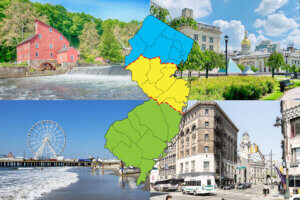Applicants for New Jersey’s federally-funded Superstorm Sandy assistance program, reNew Jersey Stronger , are generally dissatisfied with the pace of the state’s recovery efforts. A Monmouth University Poll tracking survey of hard hit Sandy victims finds that those who have applied for state assistance are particularly unhappy with their ability to get information about where they stand in the process.
Among hard hit Garden State residents who have applied for reNew Jersey Stronger assistance, just 36% are satisfied with the state’s recovery effort so far while 64% are dissatisfied. Among those who say they are still displaced from their homes, just 21% are satisfied. This compares to just under half of those who have been able to move back into their homes (49%) or were displaced for less than a month (47%) who say they are satisfied with New Jersey’s efforts.
Nearly 3-in-4 (74%) state aid applicants feel that people like them have largely been forgotten in the recovery effort. Just 26% say that New Jersey’s efforts are focused on helping people like them. Those still displaced from their homes (84%) are the most likely to feel they have been forgotten.
Applicants for reNew Jersey Stronger aid are evenly divided over how good a job the state has done in helping them recovery from Sandy – half (49%) say that the state has been at least somewhat helpful and half (50%) say it has not really been helpful. Only 15% say the state has been “very” helpful, while nearly twice as many (27%) say it has not been helpful at all. Residents who were still displaced from their homes at the time they were surveyed (38%) are less likely than applicants who had returned to their homes (57%) or did not experience significant displacement (58%) to say that the state has been helpful to their own recovery.
It should be noted that state aid applicants are not much more likely to say that the federal government has been helpful. While 49% say that New Jersey’s programs have been helpful, 53% say the same of FEMA and other federal programs. Unlike the state program, though, opinions of the federal program do not vary significantly by displacement status. Those who are still displaced (50%) are about as likely as those who have moved back into their homes (55%) or were not displaced for long (48%) to say the federal government has been helpful.
“Applicants for New Jersey’s recovery assistance tend to be negative about the program so far, especially those who have not been able to get back into their homes more than a year after the storm hit,” said Patrick Murray, director of the Monmouth University Polling Institute.
Among New Jerseyans in hard hit areas who applied for reNew Jersey Stronger assistance, 83% say they were approved for a $10,000 Sandy resettlement grant if they resettled within their county of residence. Only 15%, though, report being approved for sought-after RREM assistance that provides up to $150,000 for home rehabilitation, reconstruction, elevation and mitigation. Also, only 9% say they have been approved for up to $30,000 in hazard mitigation aid to elevate homes in 100 year floodplains. None report being awarded homebuyer assistance of up to $50,000 in no-payment loans if they purchase a home in a Sandy hit area and live there for five years.
There are no significant income differences in approval for the resettlement grants. For RREM assistance, though, those earning less than $50,000 (30%) are somewhat more likely to report being approved for this aid when compared to those earning from $50,000 to just under $100,000 (16%) or $100,000 or more (8%).
Overall, just under half (45%) of applicants report that the state has denied them services or assistance they feel they needed. Ocean County residents (49%) are slightly more likely to feel that way than those in Monmouth County (41%) or other parts of the state (39%). Among those who have been denied, about half (54%) report being denied RREM assistance and 27% report being denied hazard mitigation grants. Also, 24% say that they were told that they were wait-listed but are not sure where they are in the process and another 25% of applicants say that they were told that the program has no money.
“There appears to a great deal of confusion about the program. A review of responses from our survey panel suggests that applicants may have been provided information that has produced more confusion about the process rather than less,” said Murray.
Three-in-four applicants report that the process to sign up for reNew Jersey Stronger assistance was basically easy, although only 29% said it was very easy. Another 46% said it was somewhat easy. Overall, a similar number of state applicants report that the federal process was basically easy to follow (76%). However, lower income residents making under $50,000 a year (65%) were somewhat less likely than those earning from $50,000 to just under $100,000 (76%) or $100,000 or more (83%) to say that the New Jersey process was easy. There is no significant income difference reported for ease of the federal application experience.
While most applicants say that the process to sign up for assistance was basically easy, they are less positive about the information they have received since starting the process. Overall, just 37% say that it has been easy to get information from the state over the past few months compared to 55% who say it has been difficult. Those who report being denied reNew Jersey Stronger assistance (68%) are more likely than those who have not been denied (44%) to say they have had a difficult time getting information from the state. Also, those who continue to be displaced from their homes (66%) are more likely than those who have moved back home (48%) or were never displaced (45%) to say they have had a difficult time getting information from the state. There are no significant differences by income for getting recovery information from the state.
It should be noted that aid applicants are not having any more luck getting information from the federal government. Just 36% say that it has been easy to get recovery information from the federal government including FEMA and the SBA, while another 53% say it has been difficult.
Overall, 22% of reNew Jersey Stronger applicants report that they have fully recovered from the storm or expect to be fully recovered in the next few months. Another 31% say they expect to fully recover in about a year, 20% say it will take two or three years, 13% say it will take longer than three years, and 14% feel they will never fully recover. Among those who are still displaced from their homes, fewer than half (44%) feel they will recover within the year. This compares to 61% of those who have moved back into their homes and 58% who were not displaced by Sandy.
This release marks the third installment of results from Monmouth University’s tracking panel of New Jersey residents who were hardest hit by Sandy. Two prior reports were released in October 2013 and can be found at https://www.monmouth.edu/polling-institute/ . Future reports from this project will the track the ongoing recovery progress and concerns of the impacted New Jersey residents in the panel.
In their own words (comments from Monmouth University’s Sandy tracking panel participants):
- “The current recovery efforts seem to currently be in a black hole of information; this is distressing, I am still waiting to hear when and if grant money will be available to elevate my home.”- Homeowner from Toms River
- “The State’s lack of transparency with regard to the federal allocation is appalling. It is almost 12 months later and while the boardwalk is about to be rebuilt for a second time with Sandy dollars, not one homeowner has received a single dollar from either the RREM program or the elevation program.”- Homeowner from Brick
- “They need to offer more grants to renters. Just because we didn’t own a home doesn’t mean we didn’t lose everything. My family and I need to start life over again.”- Renter from Little Ferry
- “We need the grant money in an escrow account that the mortgage companies can hold (just like our insurance checks) for accountability. Then we can use local labor and have control over our lives. We do not need to be forced to spend our grant money on what the state THINKS we need.”- Homeowner from Manasquan
- “The RREM and HGMP programs are too slow, contradictory and inefficient. Too much is being spent on overhead; no one I know of who needs work done has had that work started. Most are stuck on step 5 of the RREM process.”- Homeowner from Brigantine
- “This program is very upsetting to me and all of my neighbors. I do not feel “Stronger than the Storm” at all…”- Homeowner from Brick
Methodological Note:
The Monmouth University Polling Institute conducted this Sandy Recovery Survey online and by telephone with 854 New Jersey residents who suffered significant damage to their primary home and applied for state assistance through the reNew Jersey Stronger Program . The results presented in this report were based on interviews completed between September 18, 2013 and January 8, 2014. This survey is part of a larger panel study designed to track the experiences of New Jersey residents who continue to be impacted by the storm. Because survey respondents were recruited using a variety of non-probability methods, the survey results cannot be statistically projected to the larger population of all Sandy victims in the state. The value of these survey findings rests in the internal poll comparisons (e.g. variations between those who remain displaced and those who are now back in their homes, variations by income levels, etc.) as well as to future waves of interviews that will track recovery progress for these individuals.
This project was designed to complement Monmouth University’s statewide and regional poll tracking of Sandy issues and specifically to highlight continuing issues in New Jersey’s Sandy recovery and provide recommendations for improving communication channels between hardest-hit residents and public/private authorities. This project was made possible by a New Jersey Recovery Fund grant from the Community Foundation of New Jersey and the Geraldine R. Dodge Foundation.
The questions referred to in this release are as follows:
1. How was the process to register for NJDCA reNew Jersey Stronger assistance?
2. Have you received or been approved for any of the following state reNew Jersey Stronger assistance programs? [Percent saying yes.]
3. Did reNew Jersey Stronger deny you any services or assistance you needed?
4. Thinking more recently, how easy or difficult has it been to get information about recovery and rebuilding from each of the following sources over the past few months?
A. The state government, including the reNew Jersey Stronger recovery program
B. The federal government, including FEMA and the SBA
5. How helpful have the following been in helping you recover from Sandy?
A. State government, including the reNew Jersey Stronger recovery program
B. Federal government, including FEMA and the SBA
6. How long do you think it will take your family to recover from the storm?
7. Are you satisfied or dissatisfied with the New Jersey’s Sandy recovery effort so far?
8. Which of the following best describes your feelings about New Jersey’s recovery effort?
Click on pdf file link below for full methodology and results by key demographic groups.




